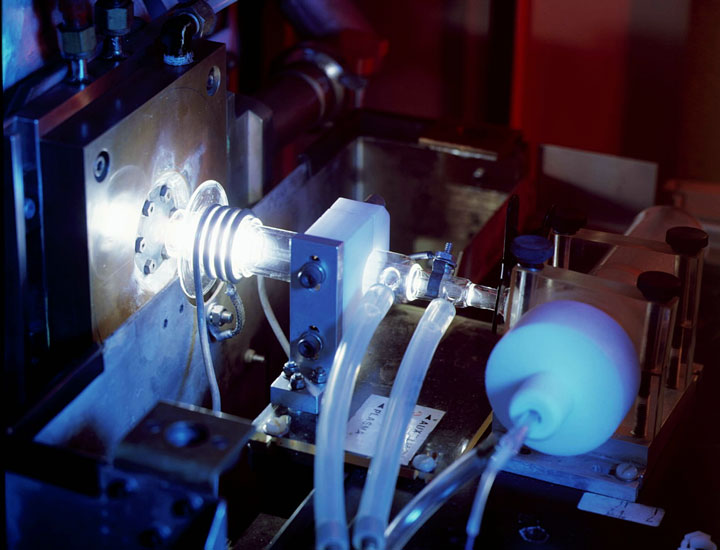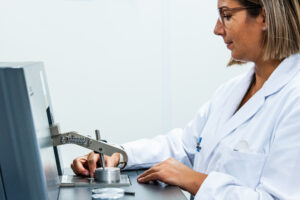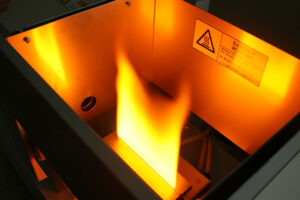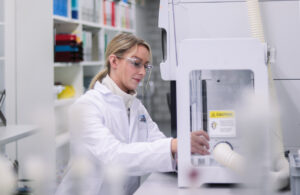Inductively coupled plasma emission spectrometry
We use our ICP-OES primarily for elemental analysis and trace analysis. Trace analysis in chemistry involves detecting substances in very low concentrations or determining them quantitatively.
Semi-quantitative screen analyses are often carried out first to get an overview of the elements present (e.g. for subsequent risk analysis). If elements close to their limit values are present, a quantitative analysis can be used to determine the elements much more precisely. This is done by matrix adjustments of the calibration solutions and optimized measurement conditions.
ICP-OES is suitable for the following matrices, for example: metals, ceramics, organic samples, water, solutions and minerals.
| investigation method | Inductively coupled plasma emission spectrometry |
| abbreviation | ICP-OES |
| Device type and equipment | Varian Vista PRO Agilent 725 OES |
| functional principle | The dissolved sample is atomized and excited in an argon plasma to emit light. The element-specific light emission of the sample atoms is measured. Up to 20 elements can be measured simultaneously. |
| Typical applications | Analysis of metals, ceramics, organic samples, water, solutions and minerals |
| detection limit | typically 50 µg/l (element dependent) |
| Requirements for sample | approx. 1g solid sample for digestion approx. 10ml liquid sample |
| Accreditation / Certification | ISO17025, GMP |
Example applications for emission spectrometry
ICP-OES for pharmaceutical and chemical industries
Emission spectrometry is used in the pharmaceutical and chemical industries primarily for qualitative and quantitative elemental analysis of unknown materials.
It is also used to determine the content or analyze the contamination/purity of process media or to analyze auxiliary and operating materials for incoming goods inspection.
Our polymer experts also use this method to determine the elemental content of plastics.
Find out more about our expertise in the area of CRO
Methods that might also interest you
An overview of further methods in the field of chemical analysis can be found in the “Chemistry Pharma” section.
These also include the following spectrometric methods:




